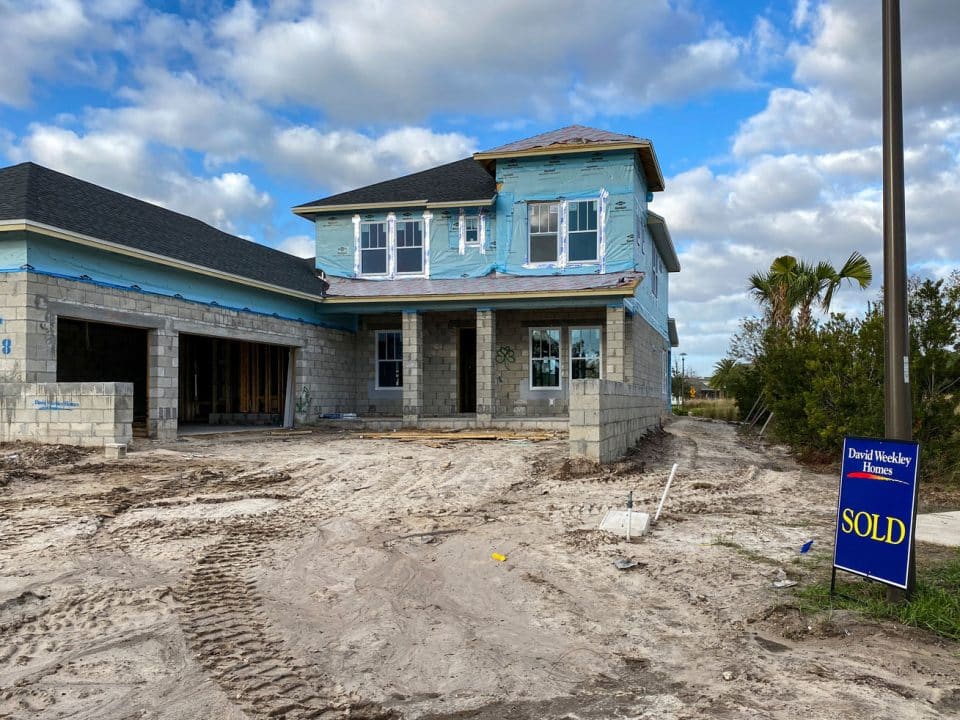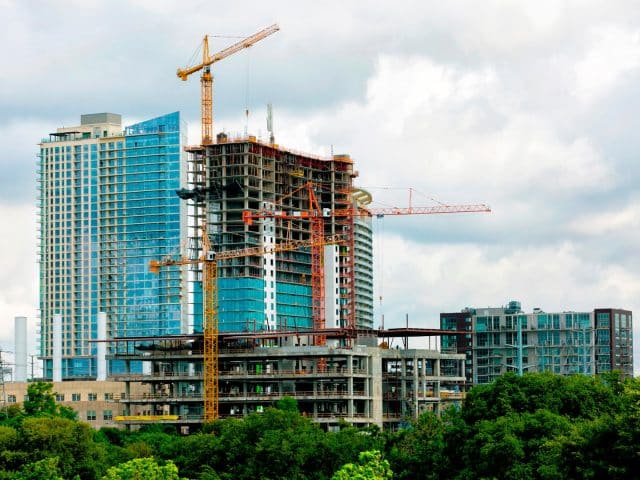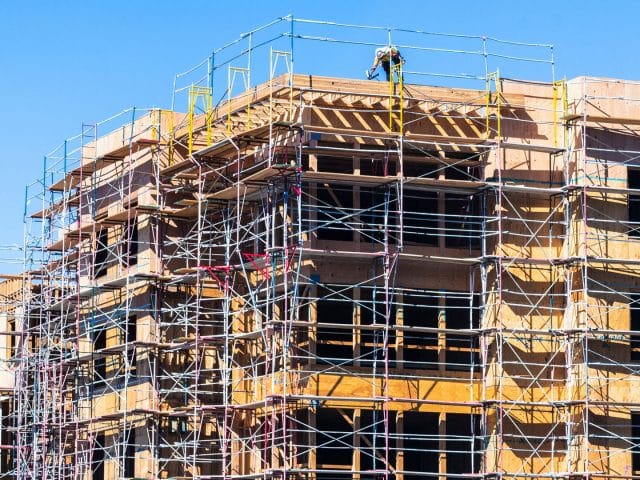
State of Housing
After a long and steady period of robust growth following the Great Financial Crisis in 2008, the U.S. housing market is searching for a new identity. A whirlwind of economic events spurred by fast-changing U.S. monetary policy, war in Ukraine and sharply rising inflation has jolted the housing market.
As the supply of houses has continued to tighten and mortgage rates increased, higher prices have put home purchases out of reach for more people and pushed more of them to renting.
The shifting market has come as the Federal Reserve has acted aggressively to curb inflation by slowing the economy with the most aggressive series of rate hikes since the 1980s. In early May the Fed raised borrowing costs at its 10th consecutive meeting, pushing its benchmark federal funds rate to between 5 and 5.25%.
By all accounts, the housing market in Florida — which produced the nation’s fastest population growth in 2022 — has arguably benefited more than any other state since the onset of the COVID-19 pandemic in 2020. Yet even the Sunshine State is not immune to headwinds slowing the U.S. economy. Consider this: in the first quarter of 2022, 80% of surveyed Bergstrom Real Estate Center advisory board members assessed the single-family housing market as “strong” or “very strong.” A year later, only 12% of the respondents replied with one of these categories.
Given the shifting dynamics, it’s a good time to take stock of the changing residential market and assess its outlook.
The Fundamentals
Examining supply and demand is the key to understanding the residential market. From 2018 to 2023, new households outpaced new residential completions by over 2.7 million (Figure 1), according to Federal Reserve Economic Data (FRED). This means on relative terms there were 15% fewer units on the market vs. households than four years earlier. According to the nonprofit research group Up for Growth, America fell 3.8 million residential units short of meeting national housing needs as of mid-2022. Or to look at the supply shortage another way, the U.S. needs to complete 4.1 million residential units to return to the same national equilibrium of supply and demand for housing as in 2018.
Source: Federal Reserve Economic Data (FRED)
The decreasing supply of residential units is also indicated by declining vacancy metrics. As of yearend 2022, 2.2 million fewer vacant units were on the market for purchase and rent than in 2018 — a 13% drop (Figure 2). The last time the percentage of vacant units was this low was in 2005, according to the Federal Reserve. Additionally, average active listings of residential units dropped to 625,875 in January 2023 – roughly half of the 1.1 million listed in January 2019.
Source: Federal Reserve Economic Data (FRED)
Strong demand and waning supply means buyers and renters are paying more for shelter. In the third quarter 2022, monthly U.S. rents averaged $2,147, up 22% from $1,767 in the first quarter of 2021, according to CBRE Econometric Advisors (Figure 3), which tracks rents in institutional apartment buildings with more than 50 units. In the fourth quarter, rents ticked down, breaking a string of seven consecutive quarterly increases.
Source: CBRE Econometric Advisors
U.S. home prices have increased at an even faster pace. After peaking in mid-2022 at $402,000, the median home sales price stood at $364,000 in December 2022, up from less than $250,000 in January 2018 (Figure 4), according to data from Redfin supplied by The Market Distillery, an econometric forecasting firm based in Atlantic Beach, Florida. Zillow data shows a similar story, with a 51% increase in median home sales prices during the same time span.
Source: Redfin
Purchasing remains a challenge for many consumers, even for those who are relatively high earners. Over 3 million U.S. households earning $150,000 a year are renting, according to estimates from the U.S. Census Bureau. In Fort Myers, typical customers of rental homes in Odyssey by Soltura, a new residential development, have median household incomes “north of $120,000,” said Steve Innacconne, partner with Naples-based Halstatt Real Estate Partners, which invests in single-family rental home communities. (See story, Going Horizontal in Southwest Florida.) Many of its tenants are millennials entering their prime formation years who can’t afford to buy a home.
Economic forecasters don’t expect buying to get easier anytime soon. “For first-time home buyers, they’re going to find it very, very difficult to get a home in the next two, three years,” said Mark Zandi, chief economist at Moody’s Analytics.
Macroeconomics
Rising interest rates have been a major reason for the housing heartache. The average 30-year fixed-rate mortgage, which fell to a historical low of 2.96% in 2021, has more than doubled to 6.37% in May 2023 as the Federal Reserve has ratcheted up interest rates to combat increasing inflation. (See Figure 5.)
Source: Federal Reserve Economic Data (FRED)
It’s a sharp contrast to just a year or two ago, when many homeowners rushed to refinance their mortgages to take advantage of low interest rates. The rate of homeownership increased, reaching 67.9% in second quarter 2020, the highest level since 2008, according to FRED. The rate has steadily dropped since to 66% in the first quarter 2023.

Average Fixed 30-Year Mortgage Rates
| Year | Rate |
|---|---|
| 2018 | 4.54% |
| 2019 | 3.94% |
| 2020 | 3.11% |
| 2021 | 2.96% |
| 2022 | 5.34% |
| 2023* | 6.37% |
*Through May 4 — Source: Federal Reserve Economic Data (FRED)
Recent banking turmoil has revealed how the Fed’s sudden increase in the federal funds rates to combat rising inflation has upset the U.S. banking system. This year, three commercial real estate lenders – Silicon Valley Bank, Signature Bank, First Republic Bank – failed, producing the second-, third-, and fourth-largest bank failures in U.S. history. The banking troubles heightened the growing concerns that the Fed’s tightening monetary policy will trigger a recession. Although multifamily fundamentals are strong, there are darkening clouds on the horizon. Companies that issued three-year debt in 2020 are facing refinancing, and commercial real estate debt is far from sheltered. A record $152 billion in U.S. mortgages backed by rental apartment buildings are set to expire this year, and $940 billion are set to expire over the next five years, according to Trepp, a provider of data to the financial and commercial real estate markets. The pending maturities of this debt will cause a reevaluation of the value of commercial real estate assets and, with interest rates above 6%, many landlords will face trouble recapitalizing their assets.

Focusing on the consumer, the higher mortgage rates are strangling American household’s purchasing power (Figure 6). In 2020, when interest rates dipped to 3%, a household with an annual income of $100,000 could qualify for a conventional mortgage to buy a $617,000 home, assuming a customary 20% down payment. In 2023, with interest rates around 6.5%, the same household could afford only a $412,000 home — a $205,000 reduction in home purchasing power. High interest rates have reduced the incentive for owners to sell and the ability of customers to purchase, pushing more households into increasingly pricey rentals.
The price of a home that a family with an annual household income of $100,000 can obtain using a conventional 30-year mortgage with a 20% down payment.
Sources: Federal Reserve Economic Data (FRED), UF Bergstrom Real Estate Center
“The higher cost of capital, increasing scarcity of available credit, lack of single-family inventory and declining affordability are four headwinds that tilt the population towards renting versus owning,” said Brian Bailey, a senior policy adviser at the Atlanta Federal Reserve Bank and a member of the Bergstrom Real Estate Center’s advisory board.
The construction climate

Building more is the obvious answer to the housing shortage, but home construction has not kept pace with rising demand. Residential construction has oscillated in close correlation with changes in interest rates. Construction surged from March 2020 to March 2022 as mortgage rates steadily fell, then slowed as rates marched up. More recently, as rates have moderated and the market remained tight, builders found themselves in a good position. Residential completions increased 24% to 1.55 million units in February 2023 from 1.25 million in February 2018 (Figure 7). Increased construction permits and starts indicates that more residential units will hit the market in the months ahead. Relatedly, investors are finding upside in buying and retrofitting older properties, especially in highly desirable locations. In 2021 and 2022, 71 office-to-multifamily conversions were started in the largest 65 U.S. metro areas, up from 49 starts in 2019 and 2020, according to CBRE Econometric Advisors.
New housing units permitted, started and completed. Units in thousands; seasonally adjusted annual rate.
Source: Federal Reserve Economic Data (FRED)
Overall, most of the uptick in construction has been concentrated in Sunbelt markets. Dallas, Phoenix, Austin, Houston and Atlanta combined for over one-fourth of the 950,000 multifamily units under construction nationwide at the start of the second quarter 2023, according to a Marcus & Millichap Multifamily National Report. The rapid growth of household formation indicates that markets with strong fundamentals and economic growth will readily absorb new deliveries in the long-term.
Interesting months ahead

The effect of high mortgage rates has yet to work through the residential real estate system, though moderating home prices may signal a shift. Home prices have fallen seven straight months through January 2023, according to the S&P CoreLogic Case-Shiller U.S. National Home Price index. That is the longest consecutive streak of decline in home value in more than a decade. Yet, given the high costs associated with homeownership and the unusually low supply of homes for sale, it’s likely more people will have no choice but to rent.
For their part, multifamily housing developers and investors say they face mounting challenges amid growing signs consumers can’t continue to absorb escalating rents. “Housing is constrained by overall building costs including land, hard and soft costs,” a Bergstrom Real Estate Center advisory board member said. “We underwrite plenty of deals and the bulk of profit is eaten up by costs that I don’t feel comfortable I can continue to pass along to the consumer. They are broke! Most are spending well over 30% [of their income] on housing approaching 50% or more.”
Indeed, given the mounting recessionary fears and overall slowing economy, what lies ahead for the residential market is fuzzy. Bailey with the Atlanta Fed, said, “The commercial real estate industry is in price discovery mode. Housing prices could follow if more inventory becomes available and loans become more expensive and scarce. A possible disconnect between policymakers and market expectations for rates could make an interesting 24 to 36 months ahead.”
